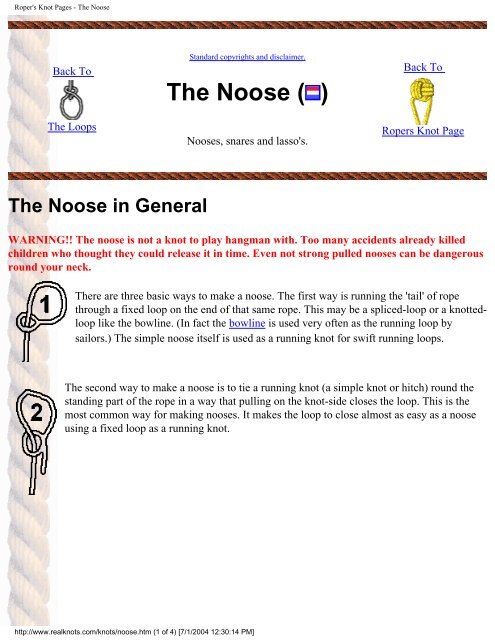Real Knots - Pole Shift Survival Information
Real Knots - Pole Shift Survival Information
Real Knots - Pole Shift Survival Information
You also want an ePaper? Increase the reach of your titles
YUMPU automatically turns print PDFs into web optimized ePapers that Google loves.
Roper's Knot Pages - The Noose<br />
Back To<br />
The Loops<br />
Standard copyrights and disclaimer.<br />
The Noose ( )<br />
Nooses, snares and lasso's.<br />
Back To<br />
Ropers Knot Page<br />
The Noose in General<br />
WARNING!! The noose is not a knot to play hangman with. Too many accidents already killed<br />
children who thought they could release it in time. Even not strong pulled nooses can be dangerous<br />
round your neck.<br />
There are three basic ways to make a noose. The first way is running the 'tail' of rope<br />
through a fixed loop on the end of that same rope. This may be a spliced-loop or a knottedloop<br />
like the bowline. (In fact the bowline is used very often as the running loop by<br />
sailors.) The simple noose itself is used as a running knot for swift running loops.<br />
The second way to make a noose is to tie a running knot (a simple knot or hitch) round the<br />
standing part of the rope in a way that pulling on the knot-side closes the loop. This is the<br />
most common way for making nooses. It makes the loop to close almost as easy as a noose<br />
using a fixed loop as a running knot.<br />
http://www.realknots.com/knots/noose.htm (1 of 4) [7/1/2004 12:30:14 PM]

















